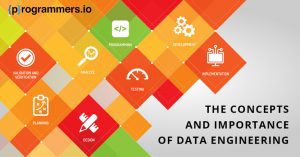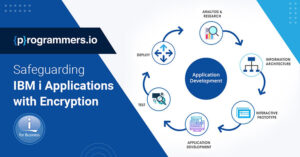Big Data Problems Organizations Need to Find Answers To
Over 90 percent of the data around the world today was created during the course of the last couple of years. Today, organizations around the world are generating over 2.5 quintillion bytes of data daily. This goes to prove that we are in the midst of a data revolution, and our data requirements are only going to increase in the future, leading to a few data problems as well.
In this article, we shed light on a few big data problems that organizations need to find answers to. These problems have plagued organizations for a while and it is time organizations found a way through.
Lack of Understanding
Perhaps the biggest data problem facing organizations today is that of a lack of understanding of data principles and the rules governing them. Companies use data to create innovation, drive new products, grow the bottom line, reduce expenses and increase efficiency. Despite the benefits on offer and the pace of data adoption, many companies have had problems truly benefitting from the data revolution and experiencing a transformation of the sorts they wanted.
One way to find a way through this big data problem is to incorporate a top-down approach. As part of this approach, organizations should train their employees from top to bottom. There should be a system in place for systematic learning.
High Cost of Solutions
Buying and maintaining the necessary data solutions can be a bit hard to manage and implement for most businesses. The necessary components required for a data solution do lead to cost efficiencies, but they come at a significant cost. There is also the additional cost of time and human resources to be involved in the process.
The high cost of data solutions can be mitigated through the right approach in decision-making. Organizations need to start by reconsidering their planned use of data resources. They should then move onwards and align their business requirements with these aims. The strategic plan formed here should be augmented with a detailed ROI to help businesses understand the necessary course of action.
Too Many Choices
As per renowned scientist Barry Schwartz, less is often considered to be more. This has been famously coined as the paradox of choice, a theory explaining how the overload of options can often lead consumers into making poor decisions.
In this world of data, it is important for consumers to make refined decisions based on true facts. The presence of choice can often lead consumers into a mindless strut with no ending to it. It is understandable for organizations to find a solution that benefits their long-term strategy and helps them truly achieve the digital transformation in the manner that they want.
A good solution can be easy to identify. If you find a good data solution, you shouldn’t try to find other options elsewhere. In fact, you should try to go for that solution and get the desired outcomes you require.
Read : Python for Big Data
Complex Systems for Data Management
Most organizations had worked entirely on legacy systems before the digital revolution came into play. These legacy systems have been used to store data and manage the previous solutions within the organization.
With data originating from different sources now, organizations have to expand and move to more complex systems with complex requirements. This can make systems turn complex quickly, eventually becoming extremely difficult for organizations to manage.
Organizations should hence go for a solution that implements automation where it is possible and ensures that organizations can access their systems on a 24/7 basis. Remote access is achievable through the cloud as it promises guaranteed results.
Security Gaps
The age of data and the transformation that has come through it has put additional emphasis on security gaps. This requires organizations to seal whatever chinks they have in their armor and grow their solutions strategically. It is never easy for organizations to focus entirely on data security without fitting in the right pieces of the puzzle. Data should be stored properly and should be encrypted through the right backups.
As result-oriented as the cloud may seem, it does come with a few glitches that need to be overcome for appropriate results. Data also needs to be stored strategically, starting with encryptions and backups.
Inaccurate and Low-Quality Data
The success of a big data model is based on the quality and accuracy of data. Data is useful when it is high in quality and generates the results that organizations expect from it. Low quality data does not only kill the purpose of the data revolution, but it also lands organizations in a severe problem.
Few problems associated with poor quality data include:
- Missing data sources
- Inconsistency in formatting
- Duplicity in data
- Inaccuracy in data
Data management plays a major role in the data-driven world today. The problems highlighted above form some of the major problems organizations face today and can be overcome with solid strategizing and management. There are many tools and technologies that make the Big Data management easier. Data handling done by experienced teams of data experts, developers and programmers leads to productive insights and better business decision making.
Big Data and Cloud
Big Data has taken over almost all sectors. As already discussed, the resources used to support Big Data may lead to a lot of financial pressure. Cloud comes in to ease this pressure. It makes many big data initiatives possible which is cost-effective. Cloud Datawarehouse is one of the best go-to options to store maximum data without security issues and financial problems. Cloud options are feasible and quite technically strong to store every kind of data be it hot or cold.
Snowflake
Data management through Cloud Datawarehouse solutions such as Snowflake and Matillion is always a yes. The concept of ETL or ELT provides you the freedom to load as much data as you can to Snowflake and use SQL queries to do all the transformations.
Matillion
Tools such as Matillion are a big sigh of relief for data-specific organizations. It supports maximum transformation operations such as loading of data, offloading of data, and altering Snowflake whenever required. Snowflake and Matillion are used together by many data driven businesses. When you extract data and realize the data rows are big, Matillion automatically changes the Snowflake warehouse size as per your data storage requirements, and then starts loading the data and then puts it back in the warehouse.
Salesforce
Salesforce helps in managing big data through its cloud solutions. It not only stores the data but also helps you in analyzing, extracting useful information, and build insights out of it. There are salesforce services and solutions to handle loads of data strategically and help your business stay updated without any extra cost or resources.
MS Azure cloud
The Microsoft Azure cloud offers big data management through AI and analytics services. It combines the benefits of big data analytics with cloud computing. The Azure platform is highly capable to handle all structured and unstructured data smartly.
Organizations can start by creating a team of experienced professionals that have experienced in data management. These professionals can take the efforts forward and can eventually create the results organizations want.
Programmers.io Data Experts and Data engineers are all set to boost up your business by making maximum use of big data, keeping all the pros and cons in mind. Fill up our short and simple contact form and we will definitely reach out to you.










